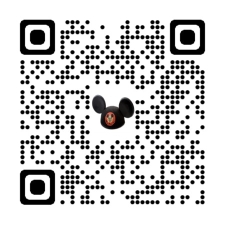The Great Big Beautiful History And Legacy Of Walt Disneys Carousel Of Progress 50 Years After It Left
ID:
TMS-5349
Source:
cinemablend.com
Author:
Dirk Libbey
Dateline:
Posted:
Status:
Current
As a West Coast resident, I have been to Disneyland far more times than I have been to Walt Disney World. As such, when I find myself in Magic Kingdom, while there are a lot of subtle differences between the two similar parks, I always find myself veering towards Tomorrowland first. The reasons are two special attractions you can find there that were once residents of Disneyland, but can no longer be found there: the Wedway PeopleMover and the Carousel of Progress.
The PeopleMover once existed in both parks at the same time before it was removed from Disneyland to make way for the ill-fated Rocket Rods. The Carousel of Progress, however, is a unique attraction because the one that you find at Magic Kingdom today is not a copy of the one that opened at Disneyland in 1967, but the attraction itself, which was moved from one park to the other.
It was 50 years ago on September 9, 1973, that Carousel of Progress closed at Disneyland so that it could be dismantled and transported across the country. On this anniversary of the ride’s closing and eventual rebirth, let’s take a look back at what brought the Carousel of Progress to life, and why it still matters to so many.
Walt Disney And The 1964-65 New York World’s Fair The opening of Disneyland itself was a watershed moment in entertainment that changed the landscape and literally invented the theme park as a concept. However, arguably the greatest single leap forward for the new art form came 3,000 miles away from Disneyland, at the 1964-65 New York World’s Fair. Walt Disney committed WED Enterprises, the group that would become Walt Disney Imagineering, to create four different attractions at the event, which allowed him to invest in new technology using other people’s money.
One of the things that Walt Disney was most interested in working on was major advancements in his audio-animatronic technology. Previously, the mechanical creations had been used successfully in the Enchanted Tiki Room, but Walt wanted to go beyond simple animals and create life-like humans. Two of the attractions, Great Moments with Mr. Lincoln (built for the state of Illinois) and the Carousel of Progress for General Electric, would be exactly that.
General Electric wanted an attraction that would spotlight its line of appliances. Walt dusted off an idea for a forgotten Disneyland expansion attraction, Harnessing the Lightning, which told the story of the history of the use of electricity in homes. GE loved the idea. The major change was that while Harnessing the Lightning was conceived as a show that would see guests move from one vignette to another, the Carousel of Progress would be, well, a carousel, where the guests were moved around a circular stage a segment at a time.
While Great Moments with Mr. Lincoln would focus on giving an audio-animatronic human a life-like look, including complex movements, the Carousel of Progress would only allow for simple movements, but would require the construction of a lot of different characters. While there are only a few characters in each scene, the design required each one to be built several times over.
The final touch was the music. The Sherman Brothers, the composers of the music for Mary Poppins, as well as several Disney attractions, including It’s a Small World, wrote “It’s a Great Big Beautiful Tomorrow," the song that bookends each segment of the show.
The Carousel of Progress was seen by many as the best attraction at the World’s Fair, even when compared to everything else that Walt Disney’s team had created. Walt Disney now had a completed attraction that could be put back on the trucks and sent to Southern California where it could become a “new” show at Disneyland. Since GE was so happy with how things turned out, it decided to continue to sponsor the Disneyland show.
The Carousel Of Progress Arrives At Disneyland The World’s Fair ended in October 1965 and three attractions would then be transported to Disneyland, It's A Small World, Great Moments with Mr. Lincoln, and the Carousel of Progress. With only some minor alterations, the Carousel of Progress at Disneyland was identical to the version that existed at the World’s Fair.
John, the father of an American family, sits centerstage and acts as narrator. He sings the praises of the “modern” world he lives in. In Act 1, it’s the turn of the 20th century. The family has some conveniences, but no electricity. In Act 2, it’s the 1920s. Several electrical appliances are now in use, including electric lights and a radio. Act 3 is set in the 1940s, and electric refrigerators and dishwashers are now in use. Act 4 took place in the then-contemporary 1960s, showing off all of the period's modern conveniences.
The Carousel of Progress was part of a major update to Tomorrowland. The area was one of the last to be finished for the original opening of Disneyland, but its rushed completion meant it became the first of the original four to receive a major overhaul. Both the PeopleMover and the Carousel of Progress would go a long way toward bringing Tomorrowland in line with its name.
The one major update came with the exit to the attraction, which would take guests upstairs to view a model of Walt Disney’s Experimental Prototype Community of Tomorrow, Epcot. An image of the urban center would also be viewable in the background of the final scene of the Carousel of Progress.
Carousel Of Progress Moves To Magic Kingdom
By the early 1970s, attendance at the Carousel of Progress had tapered off, and sponsor General Electric made the suggestion to move the attraction from Disneyland to the new Magic Kingdom park at Walt Disney World, where one assumes there would be many tourists that had never seen it before. So the process of packing it up to move it all across the country began yet again. The old Disneyland building would be repurposed into a new carousel show, America Sings, as a way to celebrate the nation’s coming bicentennial.
The Magic Kingdom Carousel of Progress would see its voice roles completely re-recorded, and a handful of updates were made to the set. The final scene would see the most significant update, with it being set in the new contemporary 1970s and all technology updated accordingly. The biggest change, however, would be the music. GE’s new sponsorship contract, which it agreed to in order to make the move happen, also included a new song. GE’s then-president reportedly didn’t like the idea of “Great Big Beautiful Tomorrow,” as he felt it suggested consumers should wait to buy all new appliances until tomorrow rather than today. The Sherman Brothers then created “The Best Time Of Your Life.”
Throughout the ‘70s and ‘80s, the attraction would see incremental updates to the attraction. In 1985, GE's sponsorship contract ended and the company chose not to renew, leading to the removal of all GE’s logos and direct references to GE appliances during the show. In 1993, however, the Carousel would see a major upgrade. Most of the voice roles were again re-recorded, the animatronics were updated and the scripts were changed, though the time periods pictured remained the same. The original Sherman Brothers song returned.
The biggest change was the final scene, which ,instead of being set in a contemporary time period, was set in the then-future 2000s, showing technologies as commonplace that were in their earliest stages of development at the time. It was also given a new name, as it has been known as Walt Disney’s Carousel of Progress since then.
Why The Carousel Of Progress Still Matters
The Carousel of Progress has been around in one form or another for nearly 60 years. It’s fitting that today it carries Walt Disney’s name because it’s one of the last attractions he was directly involved in creating. It’s also based on a concept that was near and dear to his heart, as Disney was a committed futurist.
The Carousel of Progress is equal parts nostalgia and futurism, and that might make it, if not the best Disney Parks attraction, certainly the most emblematic of what a Disney Parks attraction can, and perhaps should be. It’s a piece of both Disneyland and Disney World history.
The Carousel of Progress has remained largely unchanged since that ‘90s era upgrade, which has now resulted in a Carousel of Progress where the final scene is no longer the future, but is very much in the now. Considering that’s how the attraction ended for most of its existence, that’s fine... for the moment.
50 years after it left Disneyland, Walt Disney’s Carousel of Progress is probably due for its biggest update ever. The final scene needs yet another update if it’s going to show us a vision of the future, and the rest of the attraction probably needs updating as well, as currently the show technically covers about 120 years of time, with an 80-year gap between the third and fourth scenes.
At some point, a serious decision will need to be made over whether to update or remove the Carousel of Progress, and I certainly hope they choose the former. There’s literally nothing like it anywhere in the world. It’s never been replicated at any other Disney Park. Saying goodbye to it would mean saying goodbye to something uniquely Walt Disney, and fans have already had to do that once.
Attractions Referenced In This Article:
Lands Referenced In This Article:





